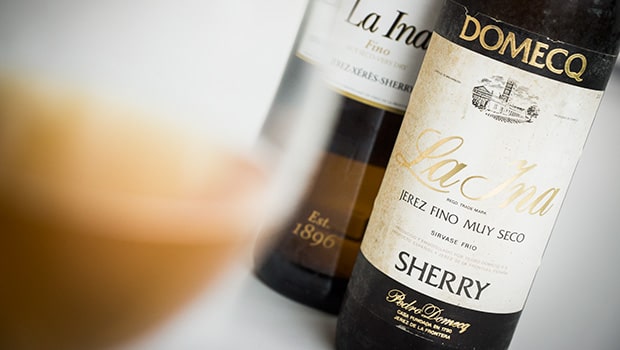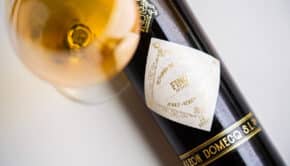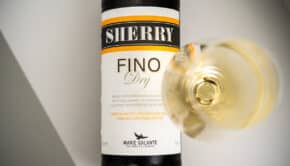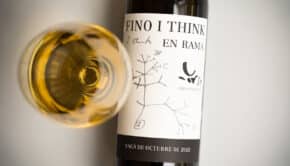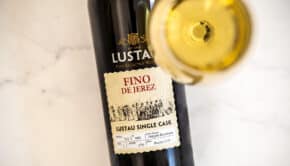La Ina (Pedro Domecq)
The solera for La Ina, the flagship brand of Bodegas Pedro Domecq, was laid down in 1919. After the liquidation of Domecq, six of their bodega buildings were sold to Lustau in 2001. A couple of years later, in 2008, they also bought the rights to some of their brands, including La Ina. So the Fino La Ina now lives on under the umbrella of Lustau / Grupo Caballero.
Fino La Ina bottled by Pedro Domecq in 1977
This is a pretty special review, as the bottle we’re trying dates back to the late 1970’s and spent almost 40 years in a cellar. In a couple of days we’ll compare it to the 2013 version bottled by Lustau. It should be noted that during the 1970’s Fino sherry was generally bottled a bit older than it is today, with less filtering. An old Manzanilla would be closer to a modern Manzanilla Pasada, and the same goes for other types of sherry.
Bottle ageing sherry only intensifies this shift so we expect this Domecq La Ina to be a Fino Amontillado. There will be clear signs of age and some oxidative effects, rather than showing a true Fino. Just look at the spectacular orange colour: much darker than a modern Fino, right?
La Ina (Pedro Domecq, late 1970’s)
Nose: quite mushroomy, almost whiffs of sulphur but they come and go. It gets cleaner with some airing but it stays rather ‘umami’ in any case. Hints of cider apples as well as plenty of nutty notes (almonds, hazelnut). Not too dry, it has a rounded, slightly caramelly edge as well. Overall a lot of freshness and not too much of the acetaldehyde notes that are so typical of modern La Ina. If you said this was an Amontillado, I wouldn’t doubt it – this was certainly bottled at a later stage than modern La Ina or modern Fino in general.
Mouth: more nuts and distant apple notes. A bit weak in the middle, but it picks up strength after a while, and goes on with hazelnuts and a hint of fudge. A fairly tangy bitterness in the end (walnut skin, lemon zest, grapefruit). Liquorice and a pinch of salt. Some tannins. Again closer to Amontillado than Fino when looked at from a modern perspective.
Availability: somewhere hidden in grandad’s cellar, if you’re lucky.
Personally my biggest question was: will this be drinkable after 40 years in the bottle? I’m glad it’s perfectly drinkable, even though it’s clear that this is quite different from a modern-day Fino. It’s difficult to know whether its specific characteristics are down to bottle ageing or simply the different preferences of the era. I suppose it’s a combination of the two.
I won’t score this one, it doesn’t make sense.


